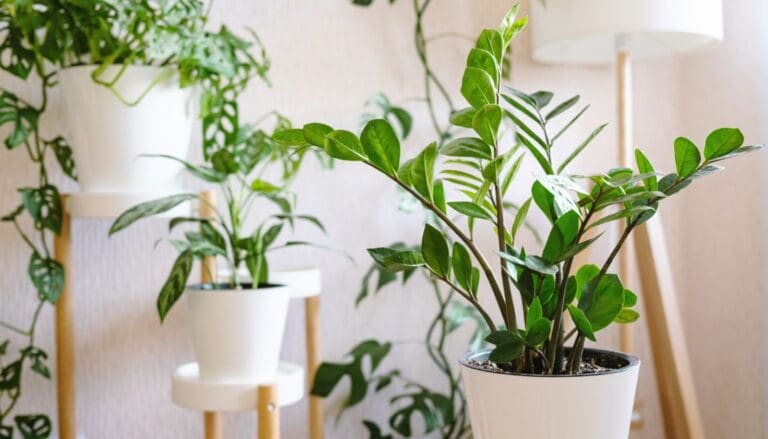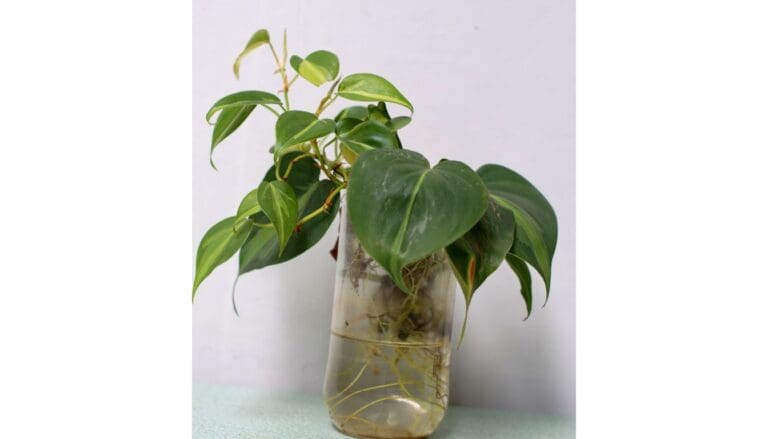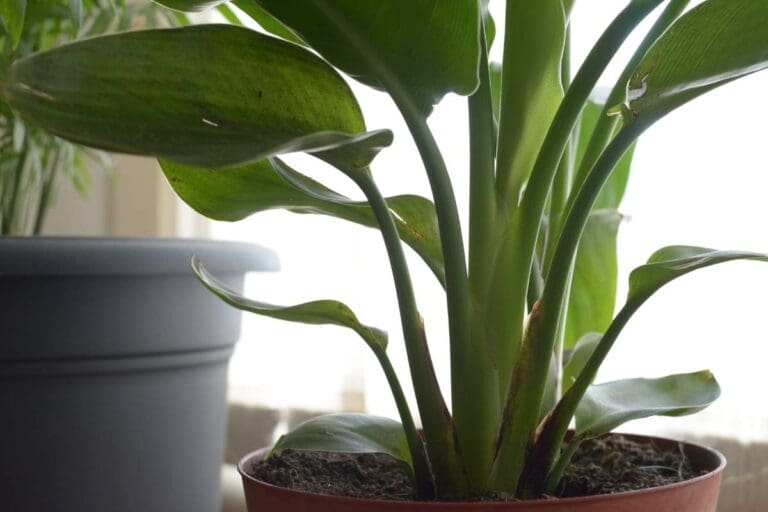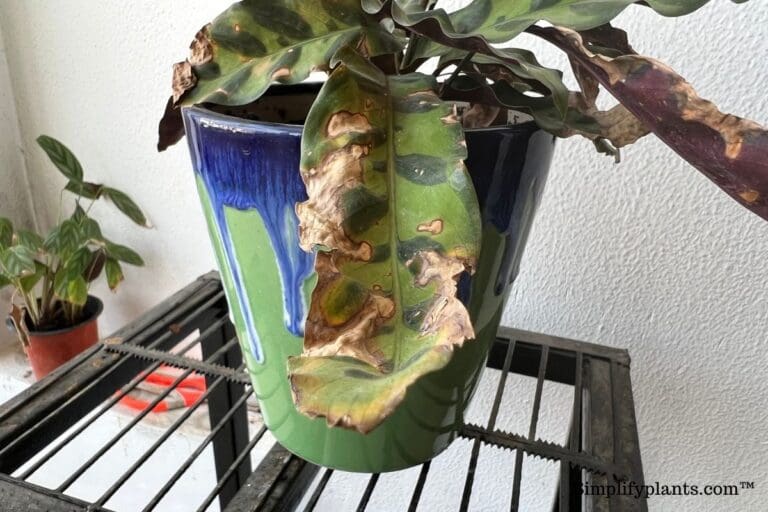Why Is My Peperomia Drooping? (Causes+How To Fix)
Peperomia, known as the radiator plant, is a popular vibrant houseplant. It is easy to care for, making it an excellent choice for beginners. Although a low-maintenance plant, peperomia can have its share of problems if exposed to unfavorable conditions. One such problem is the drooping of leaves.
It is not easy to perfect the care routine for the peperomia plant on the first go. You will learn with time, just as we did. But if you are worried about the droopy leaves on your peperomia, stop worrying, as we are here to help.
Peperomia develops droopy leaves mainly due to inappropriate watering. Both overwatering and underwatering can be the reason behind the drooping of leaves in peperomia. Some other issues can also make the leaves droopy such as dry soil, low humidity, and pest infestation.
Once you identify the problem, you can fix it and revive your peperomia leaves. And with some knowledge about how to care for your peperomia, you can prevent the problem of droopy leaves.
We will cover all these in this article so let’s start learning.

Please note: Simplify Plants is reader-supported. Some links in the post are affiliate links and I get a commission from purchases made through links in the post.
Causes of drooping leaves on your peperomia
Before getting into the details, let’s look at all the issues that cause droopy leaves, which we will discuss in this article.
- Inappropriate watering
- Low humidity
- Pest infestation
- Wrong lighting setting
- Temperature fluctuations
- Poor draining soil
- Overfertilization
Now let’s dive into the details.
Inappropriate watering
Water is a vital element required for the survival and growth of plants. In their natural environments, plants get water naturally. But when they are under our care and away from their natural habitat, it is upon us to give them the correct watering.
However, problems occur when people overwater their plants out of too much care. Overwatering is deadly and can cause root rot.
On the other hand, underwatering for an extended period can lead to dried-up soil and an unhealthy plant.
Let’s look at the differences between the symptoms your peperomia will give out when it is overwatered versus underwatered.
| Overwatering | Underwatering |
| Yellow and droopy leaves | Dry and droopy leaves |
| Signs of edema on the top leaves | Discoloration of leaves |
| Root rot | No root growth |
| Pest infestation | Slow growth |
| Brown tips or edges of leaves | Dried out soil |
How much water is suitable for peperomia?
To stop making the mistake of either overwatering or underwatering, you need to understand the water requirements of your peperomia.
Peperomia doesn’t require a lot of water like some other tropical plants. Depending on the external conditions like light, temperature, and humidity, peperomia might require water once every one or two weeks.
The key to avoiding overwatering is to check the soil before you water. In case the top few inches of the soil are still moist, and you are watering the plant on top of that, it will become overwatered.
And if you do not water even after the top inches of the soil has gone dry, you will have an underwatered peperomia.
Take a look at these to avoid both overwatering and underwatering.
- Water when the top few inches of the soil get dry.
- The excess water should drain out of the drainage holes after you water the plant.
- Use a wooden dowel post to measure the soil’s moistness. Insert it in the soil and check if it gets dry or moist.
- Always use water at a room temperature level to water your plant. Using hot or cold water can shock the plant and can also cause droopy leaves. You can let the tap water sit in a container for a few hours to reach room temperature.
- Use rich, well-draining soil that will neither retain too much water nor drain too much.
How to fix overwatering or underwatering?
Treating an underwatered peperomia is easier than treating an overwatered one.
If your peperomia is underwatered:
- Start increasing the watering frequency and the amount gradually.
- Try to come up with a schedule so that you don’t forget to water the peperomia but do not water without checking the soil.
If you have an overwatered peperomia, the treatment will depend on the stage at which you find it.
- During the early stages, you need to stop watering your peperomia and let the soil dry.
- Take the peperomia out of the pot, spread the soil and roots on paper, and place it under indirect light to dry.
- If root rot has set in, you need to remove the mushy brown roots and the damaged stems and leaves.
- You must repot the peperomia in a new pot and fresh soil mix.
- Let the plant recover and water only after checking the soil.
A quick tip: If you are a beginner consider getting a moisture meter to check the soil. This will ensure you don’t overwater or underwater your peperomia.
Also read: How Often To Water Peperomia? (Peperomia Water Requirements)
Low humidity

Peperomia requires moderate humidity levels, and during winter, when the humidity gets low, it causes drooping and falling of leaves.
You must find a way to increase the humidity for the peperomia plants during the winter season. You can do that in the following ways:
- Mist your peperomia with clean water. Do not add any chemicals to the water.
- Fill a tray with water and put some stones in it. Let the peperomia stand on the stones. Use a large tray or a shallow ceramic bowl.
- Consider using a humidifier to keep the humidity level on the higher side for your peperomia.
- Keep your peperomia in a moist spot.
Note: Make sure that the soil doesn’t get soggy, as that can lead to root rot.
Also read: Do Peperomia Like To Be Misted? (+Humidity Guide)
Pest infestation
Peperomia can tolerate a wide variety of conditions. Still, pests can bring a lot of problems to peperomia, including droopy leaves.
Let’s check out which pests can attack your peperomia plant.
Peperomia is prone to be infected by the following pests.
- Mealybugs
- Fungus gnats
- Aphids
- Spider mites
- Scales
- Thrips
- Caterpillars
- Slugs and snails
While you can handpick some of these, most can be treated with a natural pest repellent.
Pests are hard to get rid of. But using a natural pest control method assures you that your plant will not get harmed.
Also read: Do Peperomia Plants Attract Bugs? (Identification+How To Get Rid)
Fungal diseases
Overwatering is the cause of most of the fungal diseases in peperomias. Some of these diseases might be stem and root rot, leaf spot, etc.
Therefore, you should be careful enough not to overwater the plant.
Using some home remedies will help you get rid of both pest infestations and fungal diseases.
How to use garlic/ neem spray?
1. Mix 1 teaspoon of neem oil or liquid concentrate of garlic with 1 to 1.5 liter of water.
2. Empty the mixture into a spray bottle.
Spray this on the peperomia once every week until the pests vanish entirely.
Light requirement of peperomia

When it comes to light, peperomia prefers:
- Medium to bright indirect sunlight
- Or, 12-16 hours of artificial light
If you are exposing your peperomia to direct sunlight, don’t be shocked when you see droopy leaves on it.
Direct sunlight is too harsh for the peperomia and causes:
- Scorched leaves
- Sunburned and dehydrated plant
- Dry soil
- Droopy leaves
You must find a spot for your peperomia that gets indirect light and is away from the intense direct sunlight.
If your peperomia is placed near a window, use curtains and blinds to filter the direct sunlight. If placed outside, keep it under a shaded spot on your patio or under a big tree.
Now, that doesn’t mean you can keep your peperomia in low light.
If it is not getting enough light, you will notice:
- Droopy leaves
- Leggy growth
- Falling of leaves
Try to put your peperomia in a different spot where it gets more light. And if your house doesn’t have such a spot, use artificial lights.
Artificial lights also called grow lights, help the peperomia to get the required light that it doesn’t get naturally.
Another problem that many plant owners complain that their houseplants tilt towards the light source, and there is more leaf growth on that side.
This happens when the plant doesn’t get an even distribution of light. Don’t forget to rotate the pot after some days so that it gets light on all sides and doesn’t lean on one side.
Also read: What Kind Of Light Do Peperomia Need? (Peperomia Light Requirements)
Temperature fluctuations
Peperomia thrives in indirect sun and is intolerant to the dry season. High temperatures can lead to sunburn and scorched leaves.
The ideal temperature for peperomia ranges between 65 to 80°F. But, the heat coming from the sunshine can impact the temperature.
If you place your peperomia outside and the temperature goes beyond 80°F, you need to bring them in the shade or indoors.
You can keep your peperomia near east or north windows – or south windows with a curtain or blind – to filter the direct sunlight during the afternoons.
However, it would be best to place the peperomia near the east or north-facing window.
If you reside in a colder region where the temperature falls below average, you should take some extra steps to keep your peperomia healthy.
As the mercury level drops below 40°F, the leaves of your peperomia will start losing moisture and start drooping.
And if the temperature drops further, the leaves may die and fall off the plant.
So, it is vital to maintain the ideal temperature inside your house.
You can keep your peperomia near a fireplace to increase its temperature, but don’t place it very close as that can burn the leaves.
Poor draining soil

Peperomia requires rich but well-draining soil for keeping itself healthy.
You can create the ideal soil mix for your peperomia plant by mixing 50% perlite with 50% peat moss.
The soil must provide adequate nutrients to the plant other than being well-draining.
But, if your peperomia is placed in a rich potting mix that retains excess water, the plant will get overwatered in no time.
We must mention the importance of a proper drainage system that indicates a pot with drainage holes. Without drainage holes, even the appropriate soil mix will retain excess water and make the leaves droopy.
Also read: What Kind Of Soil Does Peperomia Need? (+Best Soil Mix)
Overfertilization in peperomia
You must be careful not to add excess fertilizer to your peperomia as that can cause the drooping of the leaves.
Fertilizers speed up the metabolism of the plants, and forcing metabolism can cause drooping. Peperomia should be fertilized during the growing season and not when it is dormant.
You must fertilize your peperomia with a diluted dose of a well-balanced liquid fertilizer.
Peperomias can do well even without fertilizers, but you can give it a small amount to see faster growth in it. You can fertilize your peperomia once a month during the spring and summer months.
Also read: Do Peperomia Plants Need Fertilizer? (+Best Fertilizer Pick)
Basic care tips of peperomia
- Try to keep your peperomia at a temperature of 65°F to 80°F.
- Keep your peperomia away from direct sunlight.
- Do not use a large pot, and keep your peperomia in a pot that is one size bigger than the plant.
- Spray neem oil or garlic on the peperomia to keep the pests and diseases away.
- Pruning your peperomia plant’s damaged leaves, stems, and roots will allow space for new and healthy growth.
- Protect your peperomia from hot and cold frosts and low temperature and humidity levels.
Ref: University of Florida, Sage Journal, University of Vermont, New Jersey Agricultural Experiment Station
Rutgers, The University of Arkansas, Britannica, Wikipedia, Peperomia Diseases, NC State University.
Recommended Garden Supplies
| Product Image | Our Recommended Gardening Supplies | Check Offers! |
|---|---|---|
Top Top
Top
Top
Top
Top
Top
Top
Top | rePotme Houseplant and Tropical Classic Potting Soil Mix | Check Offer On Amazon |
 Top
Top
Top
Top
Top
Top
Top
Top | Espoma Organic Indoor Plant Food | Check Offer On Amazon |
 Top
Top
Top
Top
Top
Top
Top
Top | GooingTop LED Grow Light 6000K Full Spectrum Clip Plant Growing Lamp | Check Offer On Amazon |
 Top
Top
Top
Top
Top
Top
Top
Top | Soil Moisture Meter | Check Offer On Amazon |
 Top
Top
Top
Top
Top
Top
Top
Top | Govee Hygrometer Thermometer, Bluetooth Enabled! | Check Offer On Amazon |
 Top
Top | LEVOIT Humidifiers for Large Room(Best For Plants) | Check Offer On Amazon |
 Top
Top
Top
Top
Top
Top
Top
Top | Upgraded DIY Automatic Drip Irrigation Kit, 15 Potted Houseplants Support | Check Offer On Amazon |
 Top
Top
Top
Top
Top
Top
Top
Top | Stainless Steel Heavy Duty Gardening Tool Set | Check Offer On Amazon |
 Top
Top
Top
Top
Top
Top
Top
Top | Bonide Insecticidal Soap | Check Offer On Amazon |
 Top
Top
Top
Top
Top
Top
Top
Top | Bonide 32 oz Spray Neem Oil for Organic Gardening | Check Offer On Amazon |
 Top
Top
Top
Top
Top
Top
Top
Top | Garden Safe Fungicide | Check Offer On Amazon |






